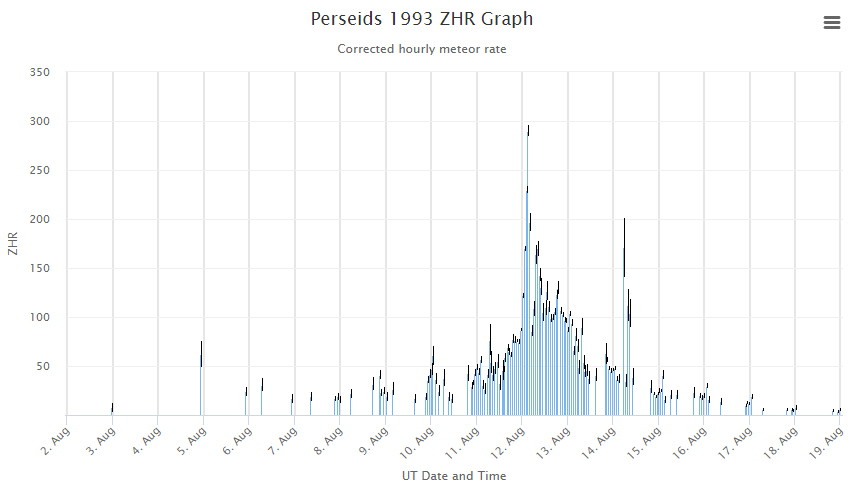The activity period of the Perseid meteor shower is now close to its end (predicted around August 24), and the activity profile of this year seems to indicate that the 2017 Perseid return was normal: maximum ZHR reached around 100 +/-10 on August 13th, around 2h UT, and nothing exceptional was noticed. But looking back in the past, especially when the parent-body of the Perseids, 109P/Swift-Tuttle, was close to perihelion, this famous meteor shower produced impressive event, with high rates (ZHRs were up to 200+), and bright meteors. If this was mainly due to the crossing of freshly ejected dust trails, a paper published by (Sekhar. et al, 2016) may also add further explanation regarding the Perseid behavior on those 1992 and 1993 Perseids exceptional returns.

Two body mean-motion resonances (MMR) proved to be the source of observed meteor outbursts when the Earth enters those zones, where meteoroids are trapped in resonances structures, mainly linked to Jovian MMR. But more difficult to understand, model, and observe, the three bodu MMR seems to be possible for some meteoroid orbits, especially the ones at the origin of the Perseids meteor shower. Actuelly, Aswin Sekhar and his team showed that the Perseid stream can undergo such resonance with the two main gazeous planets of the Solar system: Jupiter and Saturn. The main resonance is of 1:4:10 type, meaning the Perseid meteoroids make a whole Sun revolution, when Saturn makes 4, and Jupiter makes 10. And such a 3-body MMR would survive 4 000 year, meaning some meteoroids released during the past perihelion returns od 109P/Swift-Tuttle could still be trapped in such resonating zones.
While calculating parts of the Perseids meteoroid streams that could undergo such phenomenon, they realized parts of the dust trails issued from the 69 BC and 1862 AD 109P/Swift-Tuttle perihelions could have become resonant with Jupiter and Saturn. And by calculating the close approaches of those resonating meteoroids, they realized they came close to our planet… in 1992 and 1993! It is thus possible that part of the activity observed on those years were parts of these 3-body MMR, resulting in more meteors, and maybe brighter ones.
In the close future, one of the goals of such studies is to try to find some more theoritical 3-body MMR meteoroid zones, and to confirm them with direct observations. Unfortunately, regarding the Perseids and present results, the next outburst linked to such a resonance is predicted in… 2111. But in the meantime, astronomers looks to improve their predictions and models, and hope to find some others potential and maybe smaller events linked to this 3-body MMR. So stay tuned, and let’s hope the next step of directly observing one will come in a few years!
Full paper is available at this address: https://arxiv.org/abs/1605.06340




 You saw something bright and fast? Like a huge shooting star? Report it: it may be a fireball.
You saw something bright and fast? Like a huge shooting star? Report it: it may be a fireball.  You counted meteors last night? Share your results with us!
You counted meteors last night? Share your results with us!  You took a photo of a meteor or fireball? You have a screenshot of your cam? Share it with us!
You took a photo of a meteor or fireball? You have a screenshot of your cam? Share it with us!  You caught a meteor or fireball on video? Share your video with us!
You caught a meteor or fireball on video? Share your video with us!
One comment